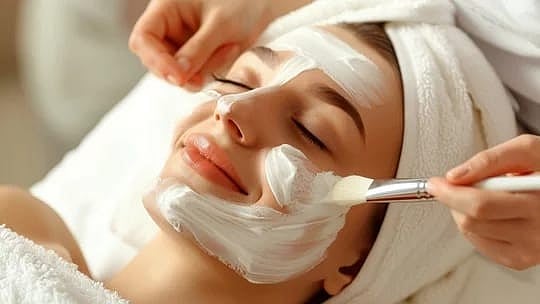India’s Obsession With Good Looks Shows Deep-Rooted Bias For European Beauty Ideals | AI Generated Image
In a world that constantly celebrates inclusivity and meritocracy, the continued obsession with physical appearance remains a troubling paradox. The recent case of a woman from Visakhapatnam, who alleged she was rejected from a job interview because her face “lacked glow”, underscores the deeply entrenched biases in our society. Similarly, the hugely talented Nawazuddin Siddiqui—celebrated for his craft and grit—recently shared how physical appearance still acts as a barrier in the Indian film industry. He also recalled a disturbing incident when a prominent Bollywood actress walked out of a film project because she was unwilling to perform a kissing scene with him. These instances are not isolated; they are symptomatic of a culture that persistently equates value with visual appeal.
From job interviews to matrimony ads and cinema to corporate boardrooms, the premium placed on “good looks” is ubiquitous. Fairness creams continue to flood the market, despite pushbacks and policy changes. Matrimonial ads often perpetuate the fairness quotient by explicitly seeking “fair” brides, equating lighter skin with beauty, virtue, and desirability. This reinforces deep-rooted colourism, marginalises darker-skinned individuals, and contradicts ideals of equality. Such language subtly endorses discriminatory standards under the guise of cultural preference affecting self-worth and societal attitudes.
On the one hand, our society has internalised colonial and casteist beauty ideals that often favour fair skin, especially in women. Dark complexion becomes a point of rejection and even discrimination, as seen in the Visakhapatnam incident. Women with dusky or dark skin are frequently subjected to derogatory remarks, treated as less attractive, and sometimes seen as lacking sophistication or charm.
Yet, on the other hand, the same society reveres and worships Maa Kaali—a powerful, fierce, and dark-skinned goddess who embodies strength, destruction of evil, and divine motherhood. Her blackness is not seen as a flaw but as a symbol of transcendence, the infinite, and the unknowable. She is venerated during festivals, her idols adored with devotion, her image evoking awe and reverence.
This societal fixation with attractive looks is not without consequences. For one, it breeds a toxic culture of comparison and self-doubt, especially among the youth. Social media platforms, with their filtered images and curated lives, amplify insecurities and distort reality. Young men and women increasingly resort to cosmetic procedures, not for health or recovery, but to conform to arbitrary standards of beauty. Mental health suffers when self-worth is measured in jawlines and skin tones.
The workplace, across the globe, is no sanctuary either. Numerous studies have shown that people deemed attractive often enjoy unspoken advantages—higher starting salaries, faster promotions, and greater positive evaluations. This phenomenon, known as “lookism”, is subtle but pervasive. It often marginalises those who do not fit the mould, regardless of their talent, intelligence, or character. The Visakhapatnam incident is a stark reminder of how this prejudice can play out in real life, denying opportunities to those who don’t meet aesthetic expectations.
The entertainment industry, ironically a mirror to society, both reflects and reinforces these norms. While actors like Nawazuddin Siddiqui and Shefali Shah have managed to carve a niche despite lacking conventional “glamour”, they remain exceptions rather than the rule. Casting decisions are still often made on the basis of appearance, with skill taking a backseat to screen appeal. Even award-winning performers face rejection or typecasting if they fail to embody the industry’s beauty ideals.
This emphasis on appearance also perpetuates inequality. Beauty standards are often steeped in Eurocentric ideals—fair skin, slim bodies, sharp noses—leaving those with darker complexions or diverse features struggling for representation and acceptance. It’s a form of cultural imperialism that erodes local identities and encourages conformity over authenticity.
So, what is the way forward? First, we must shift the lens through which we assess value—be it in employment, relationships, or media. Merit, integrity, creativity, and empathy must be celebrated more than symmetry and skin tone. Institutions—educational, professional, and cinematic—must adopt inclusive practices that de-link success from appearance. Representation matters; when people see different faces and body types being celebrated, our understanding of beauty grows more inclusive.
Second, parents, teachers, and influencers must engage in conversations that foster self-esteem and critical thinking in young minds. The goal shouldn’t be to deny beauty but to see it in our own unique ways, in ways that include many perspectives and help people feel confident and strong.
Finally, we must hold up a mirror to our own unconscious biases. Until we dismantle the belief that beauty equals worth, stories like the woman from Visakhapatnam and voices like Nawazuddin Siddiqui’s will remain necessary reminders of how far we still have to go. Mehmood’s timeless song ‘Hum Kale Hain To Kya Hua Dilwale Hain’ celebrates the beauty of a heart that loves freely, unbound by the shallow measures of appearance.
The writer is an independent journalist.
